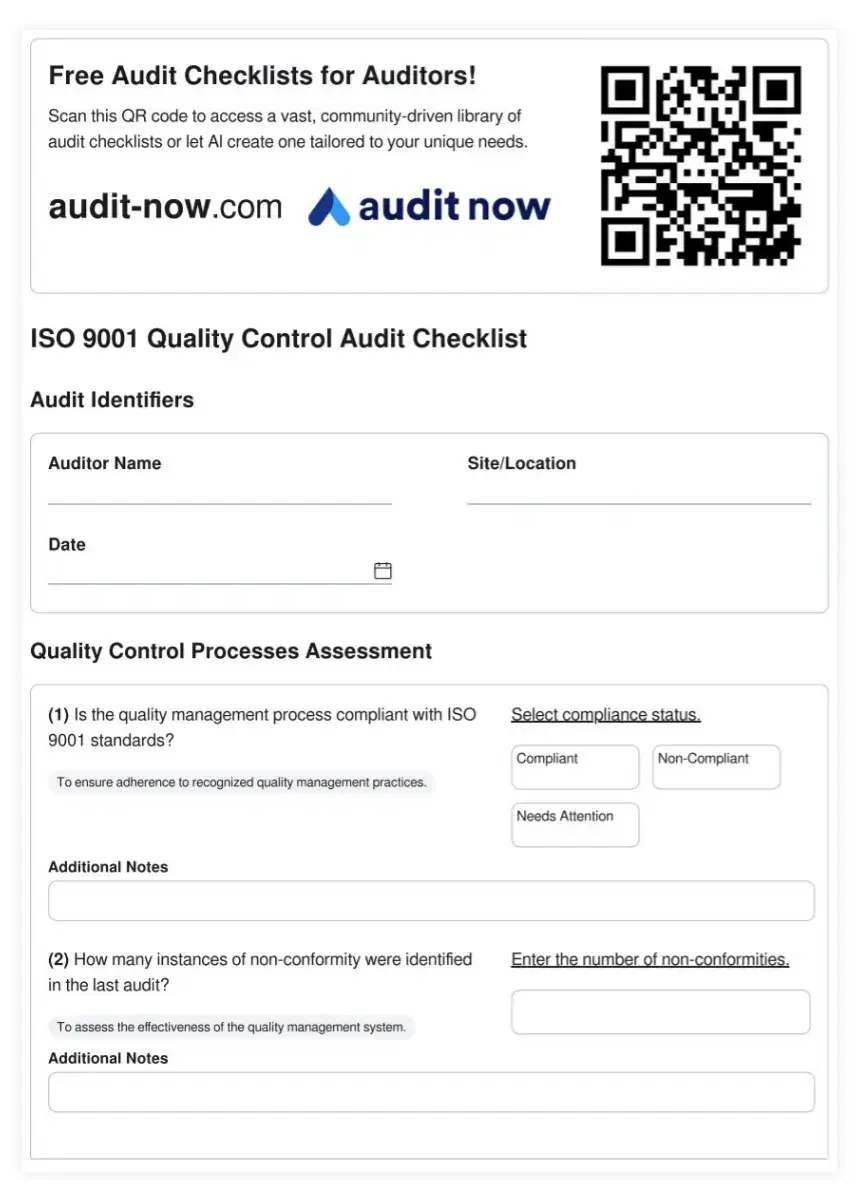Cybersecurity Analyst Checklists

Featured Checklist

Cybersecurity Risk Assessment Checklist for Financial Institutions
In an era of increasing digital threats, robust cybersecurity measures are paramount for financial institutions. This Cybersecurity Risk Assessment Checklist is a crucial tool for identifying vulnerabilities, evaluating security controls, and ensuring compliance with cybersecurity regulations in the financial sector. By systematically examining network infrastructure, data protection protocols, incident response plans, and employee awareness programs, this checklist helps financial institutions fortify their defenses against cyber attacks, protect sensitive customer information, and maintain the integrity of their digital operations. Regular implementation of this checklist not only mitigates the risk of data breaches and financial losses but also enhances customer trust and regulatory compliance in an increasingly digital financial landscape.
Cybersecurity Analyst Operational Overview
Cybersecurity analysts face a constant battle against evolving threats in today's digital landscape. They must stay vigilant, monitoring networks, investigating alerts, and responding to incidents swiftly. The sheer volume of data to analyze can be overwhelming, making it challenging to separate true threats from false positives.
These operational challenges directly impact an organization's security posture and risk exposure. Missed threats or slow response times can lead to data breaches, financial losses, and damaged reputations. Effective cybersecurity operations are crucial for maintaining customer trust and meeting regulatory requirements.
Quality management in cybersecurity analysis ensures consistent, thorough threat detection and response. This is where structured auditing becomes essential, helping teams maintain high standards and identify areas for improvement.
Core Audit Requirements & Checklist Importance
Auditing cybersecurity analyst operations involves examining key processes, tools, and outcomes. Essential components include reviewing incident response procedures, assessing threat intelligence utilization, and evaluating the effectiveness of security controls. Audits also cover analyst training, documentation practices, and adherence to industry standards.
Systematic checklists play a crucial role in cybersecurity audits. They ensure no critical areas are overlooked, provide a consistent framework for evaluation, and help track improvements over time. Checklists also serve as valuable training tools for new team members, promoting standardized practices across the organization.
Compliance with industry regulations and standards is a key driver for cybersecurity audits. Many sectors have specific requirements for data protection, incident reporting, and risk management. Regular audits help organizations demonstrate their commitment to security and avoid potential penalties.
- Incident response procedures: Evaluate readiness and effectiveness
- Threat intelligence processes: Assess collection, analysis, and application
- Security tool configuration: Review settings and update practices
- Analyst training and skills: Verify ongoing education and certifications
- Documentation and reporting: Check completeness and clarity of records
Navigating the Threat Landscape
Cybersecurity analysts must contend with an ever-expanding array of threats, from sophisticated nation-state actors to opportunistic cybercriminals. The rapid adoption of cloud services, Internet of Things (IoT) devices, and remote work setups has widened the attack surface, creating new vulnerabilities for analysts to monitor and protect against.
Best practices for modern cybersecurity analysis include implementing a robust Security Information and Event Management (SIEM) system, leveraging threat intelligence feeds, and adopting a proactive threat hunting approach. Analysts should also focus on developing strong incident response playbooks and regularly participating in tabletop exercises to simulate various attack scenarios.
Quality control in cybersecurity analysis involves continuous monitoring of key performance indicators (KPIs) such as mean time to detect (MTTD) and mean time to respond (MTTR). Regular peer reviews of incident reports and threat assessments help maintain high standards and foster knowledge sharing within the team.
Optimizing Cybersecurity Operations
Process optimization in cybersecurity analysis focuses on streamlining workflows to improve efficiency without compromising thoroughness. This might involve automating routine tasks like log analysis or alert triage, allowing analysts to focus on more complex investigations. Implementing a well-defined escalation process ensures that critical threats receive immediate attention from senior team members.
Risk management is central to cybersecurity operations. Analysts should work closely with business units to understand critical assets and potential impact of various threats. This information guides prioritization of security efforts and resource allocation. Regular risk assessments help identify new vulnerabilities and adjust protection strategies accordingly.
Key performance metrics for cybersecurity analysts include the number of incidents detected and resolved, false positive rates, and time spent on various activities. Tracking these metrics helps identify bottlenecks in the analysis process and areas where additional training or tools may be needed. For example, a high false positive rate might indicate the need for better tuning of detection rules or investment in more advanced analytics capabilities.
Digital Transformation with Audit Now
Audit Now's AI-powered checklist platform revolutionizes the cybersecurity audit process. Our intelligent system learns from industry best practices and your organization's unique needs, generating comprehensive checklists tailored to your specific environment. This ensures that your audits cover all critical areas while adapting to the evolving threat landscape.
Real-time collaboration features in Audit Now enable seamless teamwork during audits. Analysts can share findings, assign tasks, and track progress effortlessly. Our extensive template library offers pre-built checklists for common cybersecurity frameworks and standards, saving you time and ensuring compliance. Experience the future of cybersecurity auditing with Audit Now.
Ready to elevate your cybersecurity audit process? Explore our cybersecurity analyst templates at audit-now.com/templates/. For a custom solution, try our AI checklist generator at audit-now.com/generate-ai-checklist/.